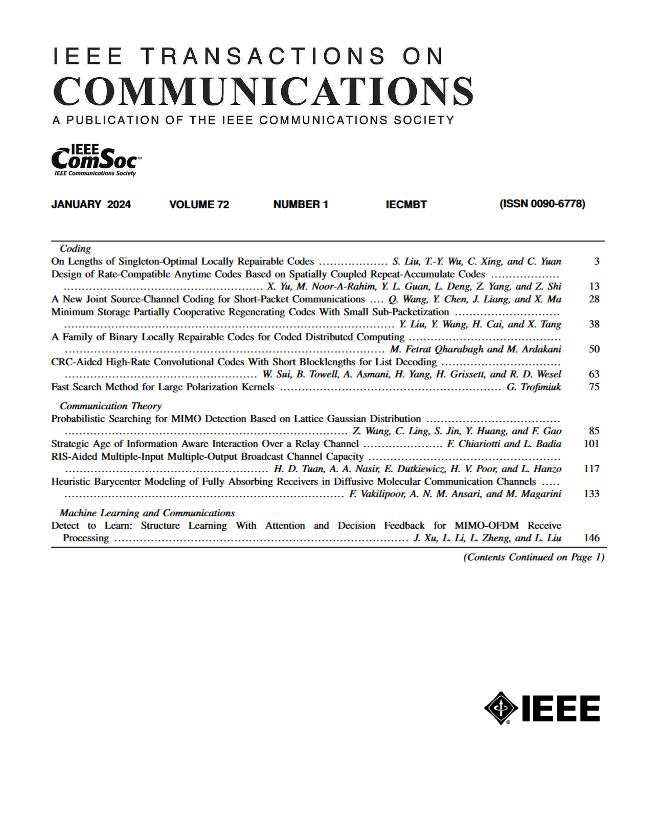无线流媒体的突发与连续传输
IF 8.3
2区 计算机科学
Q1 ENGINEERING, ELECTRICAL & ELECTRONIC
引用次数: 0
摘要
本文分析了具有延迟约束的无线流传输的能量消耗。一个基本问题是,发射机是应该传输稳定的比特流,还是连续传输,还是以突发方式传输数据并在不传输时关闭。在后一种情况下,还有一个问题是发射机应该在多大比例的时间内发射,即占空比。本文利用传统的有限块长度信息理论来考察突发传输是否优于连续传输。在进行此分析时,我们考虑延迟和能源效率,这是表征通信系统的两个基本参数。我们考虑了实际的硬件模型,包括开销功率、功率放大器的低效率和接收机噪声因子。使用这些模型,我们发现能量消耗和延迟权衡的行为与理想情况大不相同。本文章由计算机程序翻译,如有差异,请以英文原文为准。
Bursty Versus Continuous Transmission for Wireless Streaming
This paper analyzes energy consumption in wireless streaming with delay constraints. One fundamental question is whether the transmitter should transmit a steady stream of bits, continuous transmission, or transmit data in bursts and switch off while not transmitting. In the latter case, a question is also for what fraction of time the transmitter should transmit, the duty cycle. In this paper we use traditional and finite blocklength information theory to see whether bursty transmission would be better than transmitting data continuously. When doing this analysis we consider latency and energy efficiency, two fundamental parameters that characterize communication systems. We take into account realistic models of hardware, including overhead power, power amplifier inefficiency and the receiver noise factor. With these models we find that the energy consumption and latency tradeoff behaves quite differently from the ideal case.
求助全文
通过发布文献求助,成功后即可免费获取论文全文。
去求助
来源期刊

IEEE Transactions on Communications
工程技术-电信学
CiteScore
16.10
自引率
8.40%
发文量
528
审稿时长
4.1 months
期刊介绍:
The IEEE Transactions on Communications is dedicated to publishing high-quality manuscripts that showcase advancements in the state-of-the-art of telecommunications. Our scope encompasses all aspects of telecommunications, including telephone, telegraphy, facsimile, and television, facilitated by electromagnetic propagation methods such as radio, wire, aerial, underground, coaxial, and submarine cables, as well as waveguides, communication satellites, and lasers. We cover telecommunications in various settings, including marine, aeronautical, space, and fixed station services, addressing topics such as repeaters, radio relaying, signal storage, regeneration, error detection and correction, multiplexing, carrier techniques, communication switching systems, data communications, and communication theory. Join us in advancing the field of telecommunications through groundbreaking research and innovation.
 求助内容:
求助内容: 应助结果提醒方式:
应助结果提醒方式:


